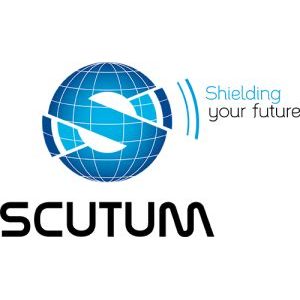Common Fire Hazards for Facilities Managers
Those that are in charge of the coordination and organisation of people, space and equipment within a particular premises, whether a block of flats or offices, a school, leisure centre or any other public environment, fall under the bracket of facilities manager. These persons are often responsible for ensuring that health and safety levels on the premises remain of a high standard, and this includes all aspects of fire safety.
As part of the Regulatory Reform (Fire Safety) Order 2005, facilities managers would be the ‘responsible person’ designated to carry out fire risk assessments. As part of this role, any hazards within the premises that could cause – or obstruct escape from – a fire would need recording and rectifying. It’s therefore important to recognise what some of the common hazards that may be faced by facilities managers.
Common Hazards
Due to the varying nature of many of the facilities that come under the control of facilities managers, defining a universal set of common hazards is difficult. This means that a full understanding of the elements that cause a fire (primarily a source of ignition, a source of fuel and a source of oxygen), and identifying where in the property may be vulnerable to the three elements of the fire triangle, becomes very important.
Kitchen areas, prevalent in many residential, hospitality and healthcare facilities, are a major cause of accidental fires, with cooking fats, open flames and blocked ventilation filters are all a danger – especially when negligence could be a factor.
Another hazard that may exist in kitchen areas, as well as other locations around the premises, is a buildup of incorrectly disposed of refuse. Whether this is a pile of rubbish bags that haven’t been taken away, or an overflowing bin that might contain lots of different flammable materials, the risk is just as pertinent.
Understanding flammable goods and equipment that might be on the premises is vital towards identifying fire risks. Electrical equipment in leisure centres or office environments is a constant threat to safety if not properly used or maintained, and properly scheduled testing is crucial.
Within residential and commercial environments, staff members and tenants alike must be made aware of their responsibilities when it comes to fire safety and evacuation procedures. This includes ensuring that they follow fire prevention guidelines, such as only smoking in designated areas, not overloading plugs and making sure that correct ventilation is in place while cooking.
Avoiding Hazards
As with any commercial environment, a full and thorough fire risk assessment – a requirement by law – is the most efficient way to avoid hazards through their identification and removal.
In kitchen environments, this means making sure that all ventilation is fully operable and kept clean of grease and dust at all times. Not only will a risk be present if fumes and heat aren’t allowed to properly escape, but dust particles caught up in extractor fans and the like are potential sources of fuel. Sufficient fire fighting equipment, such as fire blankets to smother cooking fires and the correct extinguisher for the environment (Class F for cooking oils and fats), will be adequate for preventing minor kitchen fires from spreading to other areas.
For facilities with a lot of electrical equipment, such as gyms, office spaces, residential complexes and similar, regular testing and checking of electronics and sockets is vital for fire safety (as well as being necessary by law). PAT testing from professional electricians is the best way to ensure that any electrics do not present a fire hazard, and regular visual inspections by the facilities manager (checking for damaged plugs, overloaded sockets, signs of scorching etc) will help to maintain safety levels.
Arson is often cited as the number one cause of fire at the majority of commercial properties, making security the best way to avoid this particular fire hazard. CCTV and manned security will help to deter arsonists from starting fires, and facilities managers should ensure that the property is inaccessible after hours. Similarly, keeping all refuse and rubbish bags well protected in a closed off and locked area that is well away from the building is essential in the fight against arson.
As with all premises, making sure that the correct fire fighting and prevention equipment is present and well maintained is vital. As a facilities manager, be sure to select the correct extinguisher type for the materials and equipment present in your environment (be sure to ask the advice of the professionals at Scutum London, and follow the regulated protocol for having fire fighting and fire alarm systems checked at sufficiently regular intervals.
Facilities management encompasses many different commercial and residential environments, such as schools, office buildings, leisure centres and more. With this in mind, the type and nature of the fire hazards that may be present will vary from property to property. This makes the Fire Risk Assessment as important as ever, ensuring that all potential risks are considered and rectified.
For more information about carrying out a fire risk assessment as a facilities manager, you can read our fire risk assessment guide and checklist for the facilities industry, or get further help and advice by contacting the team at Scutum London today.
Request a Callback
Just fill in your details below and we'll get back to you as soon as we can!

About Scutum London
Scutum London is a leading expert in fire safety and security solutions for businesses and organisations located across South East England, including London and Surrey.
From fire alarms, fire extinguishers and fire risk assessments to access control, CCTV and intruder alarm systems – and a lot more besides – we offer a comprehensive range of products and services designed to keep you, your business and your staff and visitors safe.
With decades of industry experience to call on, we’re proud to hold accreditations from leading trade associations and bodies such as British Approvals for Fire Equipment (BAFE), the British Fire Consortium, the Fire Industry Association (FIA) and Security Systems and Alarms Inspection Board (SSAIB).
If you’d like to find out more about Scutum London, get in touch with our friendly team or explore our products and services on our site.

